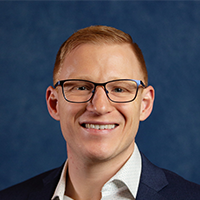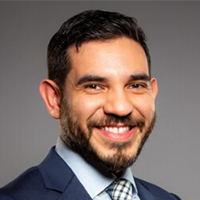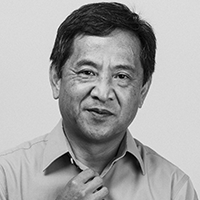Biological & operational considerations for iPSC-derived cell production
Cell & Gene Therapy Insights 2023; 9(11), 1493–1501
DOI: 10.18609/cgti.2023.196
While cell therapies offer great promise, questions remain on the most effective tools and processes for transitioning from the lab bench into the production suite. In this roundtable discussion, four experts discuss considerations and challenges for scale-up of induced pluripotent stem cells. Methods and solutions for scaling production will be discussed, including biological and operational process optimizations.
You can watch the full roundtable here, or read the discussion below.
What are the main success factors around iPSC-derived cell therapy manufacturing scale-up from the biological perspective?
AC: Before you reach scale-up, there is a lot of research to be done on the components you need and their performance and stability. The components that are important when you are doing this type of scale-up include the culturing media, the coating substrates, and the vessels.
During our process development stage, we did a lot of testing to ensure that the performance of these components was good and that we were able to passage and culture these induced pluripotent stem cells (iPSCs) long-term. Even when you do all of that testing, there is a lot of line-to-line variation between iPSC lines and there still might be some issues that have to do with the line. You have to do what you can control, and what you can control is thoroughly testing all the components related to iPSC culture.
AM: Regarding the raw materials, one aspect of process development that can help determine whether or not a raw material is going to provide consistency and high quality is ensuring that you have the critical quality attributes set for your cell therapy product. Defining these around marker expression, differentiation potential, and potency for that particular therapy is also helpful as when you are testing these different raw materials for their consistency, you have a standard to which you can compare.
AF: Similarly, the starting material or origin of your iPSC itself is critical. It is important to do your homework and identify the best source for your reprogramming. Additionally, you must consider the technology that you’re going to use for reprogramming, to determine if one method versus another is more efficient in your current process development.
When considering your strategy, you have to acknowledge how all these factors are going to play into your end product. By keeping these parameters in mind during process development, you can assess how the modifications will impact differentiation potential or end-product differentiation.
What do we know about the stability and variability of iPSCs, and how to optimize these aspects through scale-up?
JW: Firstly, consider a stability issue with iPSC lines. Intrinsically, iPSCs have line-to-line variation that relates to how the cells are made. We have seen cases where iPSCs have a higher tendency to spontaneously differentiate during culturing. That becomes a much bigger problem when you scale up since the culture environment might not be as ideal as when you were working with a smaller population of iPSCs.
If the starting iPSC line is not optimal, it will lead to a bigger problem at a later point. The variability also refers to line-to-line variation in terms of whether a protocol could work with different lines. When starting work on iPSC-derived cell therapy, the protocols should be tried with multiple lines. There have been cases where only one cell line works for a protocol that lasts several months. Different cultures must be tried to ensure the protocol works, and results in the desired end cells.
During process development, the GMP process should not be overly optimized to a single line—this ensures the protocol can still work if the cell line has to be changed.
The ideal solution is to begin with the right iPSC line, particularly when manufacturing a cell therapy. We use mRNA and have found that the process has been stable, and the lines are completely reprogrammed. The epigenetic memories from the parental cells are erased, which is critical for large-scale therapy.
What are the key cell expansion platform opportunities in the iPSC space, both now and in the future?
AF: When expanding iPSCs and generating a future master cell bank, you must confirm that the product is robust from vial to vial or clone to clone. The goal is to maintain high yields and continue to meet your chosen quality metrics, whether at small or large scale. Additionally, safety must be ensured.
One of the platforms that can provide this increased robustness is stacked vessels, and at Corning®, there are several solutions for this: for example, the CellSTACK®, and HYPERStack®. Here, we increased the surface area to boost the yield from one product and one vessel, which can then be scaled out. This allows you to maintain consistency in your production.
When considering higher yields, we have a new platform, Ascent®, a fixed bed reactor that increases the surface area yet further and allows more consistent production of your iPSC culture.
JW: We have previously tried the CellSTACK, we are currently trying the HYPERStack, and we are considering trying CellCube® with different cells produced in our GMP operation. However, we haven’t yet found a single platform that will suit all of them. As a developer, you have to do your research to see which platform works the best. So far, I have to say the Corning support has been excellent.
AM: As stated, there is variability in the clones and lines of the iPSCs, but there is also variability in the cells that they further differentiate into. Having the flexibility of different platforms can be helpful, particularly for this application. We have been discussing adherent platforms where the cells adhere to the surface and, generally, that surface is coded for iPSCs.
There have been some transitions to aggregate suspension culture; however, a majority of the literature has been published in 2D platforms. There is a much larger base of data and protocols to pull from utilizing those 2D platforms. There may be some application areas and cell types that the iPSCs would differentiate into that may not be supported in a suspension platform. Again, there is value in having different platforms depending on the end goal of the cell therapy process.
How and where are closed systems and automation helping in iPSC processing?
AM: It is well known that there is always a risk of contamination. This is particularly relevant for iPSC-derived cell therapies for two reasons. Firstly, these processes can be longer than other bioproduction workflows so there is more risk of contamination.
Secondly, many of the raw materials, such as the media and reagents, are quite expensive. Closed system solutions help to reduce that contamination risk and can be integrated into the stack vessels (CellSTACK and HYPERStack). Bioreactor processes are generally integrated with tubing sets and bags, which reduces the risk of contamination and allows transfer of volumes utilizing those tubing sets and pumps.
There are a variety of companies implementing automation strategies and Corning offers an automated manipulator platform that handles HYPERStack and CellSTACK units. When it comes to bioreactors, there are some automated pumping systems. For example, the Ascent fixed bed bioreactor has built-in pinch valves that automate the opening and closing of different sections of the tubing, controlling the transfer of liquids to and from the bioreactor, and media vessels.
JW: For operations teams like ours, there may be a need for a particular process and a closed system will be designed accordingly. The design needs to be process-specific, which can be a lengthy process. If there is interaction between a commercial system developer and the end users, that can enhance the final product usability for operations like ours.
At what stages are (and aren’t) GMP reagents and workflows needed in iPSC master cell bank creation?
AC: There is a lot of investment and commitment to be made in the GMP space due to reagents being expensive. Adopting a GMP mindset at the early process development stage, when drafting the documents and necessary paper trails, has proven beneficial.
It is best to test out the reagents as early as possible and attempt to find the best vendors (with large inventories, quality management systems, and lot-to-lot consistencies), and integrate those in protocols while doing the process development. However, in some cases, there may be materials or reagents that are non-GMP or not available in a GMP offering.
Developing internal qualification processes is good, as it allows an organization to qualify non-GMP reagents and integrate those into the workflow. Generally, this should happen as early as possible. There are financial constraints when dealing with reagents that are more expensive in the GMP offering, but using GMP reagents as early as possible will be of great benefit to the program.
AF: Using GMP ranges early enough depends on process development and workflow, but thinking GMP as early as possible will help avoid future issues. For example, a particular reagent being used in an R&D form may work well, but when you switch to the GMP version, you may have a different potency. In addition to the regular process of development, having that GMP mentality and testing GMP reagents continuously to assess future feasibility is critical.
From the end-user perspective, what do you look for in a raw material supplier for a GMP-compliant process?
AC: Good vendors communicate with clients if any changes are being made and this holds high importance as a lot of documentation is based on product specification and certificates of analysis (COA). This has been an issue with other companies where the product specification or COA is changed, leading to changes in documents, controls, and downstream documentation.
End-users typically use a lot of these reagents, and we like to see a vendor that has a strong quality management system. This ensures a consistent quality of products that are repeatable and reliable. It is critical that the vendor has good quality management, product specification, and consistency of COA. These are all things that make our lives much easier. Thankfully, Corning has been great for communication with the products that we use.
What are some key points of focus for iPSC-derived cell therapy manufacture throughout the pipeline as complexity increases in the field?
JW: The stage-specific attributes of the cells are critical when companies move from early development to manufacturing for phase 1, 2, and 3 clinical trials and future market product production. As the later stages of cell culture require more passages, certain problems that were not in the early stage can become major problems later. Pharmaceutical companies who license our iPSCs say that they see the difference between our line and other lines in the field.
Just because a line is available to the field does not necessarily mean it is a good line. Companies may need to spend more time or money to ensure the lines work in different stages. Studies can also be done to assess cell stability in terms of their morphology, post-thawing viability, telomere length, and general genome stability. From firsthand data, the iPSC line quality itself can dictate all of these important attributes further down the line.
The iPSCs are used for differentiating into different effector cells for therapeutic purposes. The desired property of the final product is important and should be included within the study early on to ensure purity and functionality during large-batch production
It should also be noted that genome editing is now becoming part of the iPSC workflow. That requires consideration of selecting single cells as they may have a different genome after genome editing. Our mRNA-produced iPSCs remain very consistent as there are no nuclear events, meaning we do not need to do single-cell selection and can instead use pools.
There are scientific and practical benefits to using a selected pool of iPSCs, but we also ensure that a single-cell process under GMP could be used. Occasionally some projects or partners prefer to have a single clone from a single iPSC. These are the considerations that a team that works on an iPSC-based therapy should keep in mind.
AM: There are some differences in cell biology when going from a small-scale petri dish/T-flask to a bioreactor/stack vessel. It’s important to consider the kind of scale-down model that can be utilized and is representative of the final production scale being targeted. There have been many instances of end users starting at one scale and moving to a much larger bioreactor where the cells do not behave the same after that transition.
AF: Concerning the model and how to extrapolate from smaller to bigger processes, it is important to think about your support system, such as the type of media being used and whether it supports genomic stability. The main goal is to create a robust process that is not as sensitive when there is a formulation change from small to large scale.
Finally, can you each briefly share your broad vision and expectations for key future directions in the iPSC field?
AF: I expect that the platform used for iPSC scale-up should be a robust, consistent cell that will be tailored to the process. Whether the manufacturing scale is in a 2D or 3D system, the field is still trying to define the most appropriate model. However, the main thing that I envision is an increased care for the quality of the iPSCs. Taking into account everything mentioned, the important question will be how to have the best starting material for your end-goal therapy.
JW: For the iPSC field, in more general terms, only a couple of dozen players are using iPSC-derived cells for cell therapy currently. However, I am certain that the field will grow. Most companies focus on allogeneic iPSC lines, which is why having a good line is beneficial to begin with. If modifications are needed, they can be done upfront so that you can ensure everything still works for the protocol. I’m hopeful a good line will work for all protocols.
I believe autologous iPSCs will have a bigger place in the industry and that capability will benefit the field as we mature into producing usable cell therapies.
AC: I agree that we are in the early part of this field. There is a lot of focus on the allogeneic approach right now, but I think in the future, autologous could be a major focus point. You are asking for two different things between allogeneic and autologous approaches and conquering the two things will make it a very fruitful field.
AM: Currently, iPSC-derived therapies are the most complicated biological product to produce. There are many steps and inputs in terms of raw materials, and close relationships and partnerships with suppliers will be critical to moving this field forward. Due to the complex nature of the products, this work is very difficult to do in a silo, and having supplier partnerships can provide that support.
Affiliations
Austin Mogen PhD
Field Application Scientist Manager,
Western United States and Latin America,
Corning Life Sciences
Antonio Fernandez-Perez PhD
Field Application Scientist,
Corning Life Sciences
Jiwu Wang PhD
Founder and CEO,
Allele Biotech
Andrew Chammas
Process Development Scientist,
Allele Biotech
Authorship & Conflict of Interest
Contributions: The named author takes responsibility for the integrity of the work as a whole, and has given their approval for this version to be published.
Acknowledgements: None.
Disclosure and potential conflicts of interest: The author has no conflicts of interest.
Funding declaration: The author received no financial support for the research, authorship and/or publication of this article.
Article & Copyright Information
Copyright: Published by Cell & Gene Therapy Insights under Creative Commons License Deed CC BY NC ND 4.0 which allows anyone to copy, distribute, and transmit the article provided it is properly attributed in the manner specified below. No commercial use without permission.
Attribution: Copyright © Corning Life Sciences. Published by Cell & Gene Therapy Insights under Creative Commons License Deed CC BY NC ND 4.0.
Article source: Invited. This article is based on an Expert Roundtable discussion, which can be found here.
Expert roundtable recorded: Nov 1, 2023; Revised manuscript received: Nov 29, 2023; Publication date: Dec 20, 2023.






